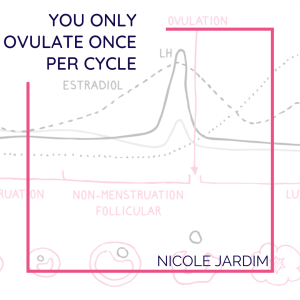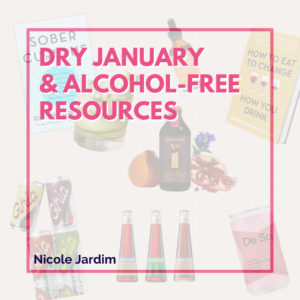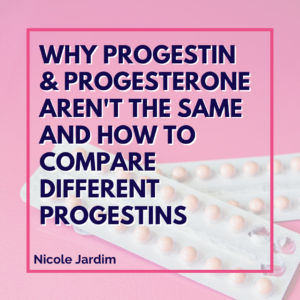I recently published a post on Instagram touting the benefits of the fertility awareness method as birth control.
Let’s just say, the response I received made me want to laugh and cry at the same time…
A few people commented saying that they were afraid to use this method because they ovulate more than once in their cycle.
Wait, what?
Oh, ladies, let me put your mind at ease: You don’t ovulate more than once per cycle. Promise! (That’s just now how ovulation works. See below.)
Others said the menstrual cycle is “not that cut and dry,” and that “I am misinformed and shouldn’t be telling women we only ovulate once in a cycle.”
Ahem.
You all do know that I went to school for this stuff, right? That I’ve meticulously studied women’s health and am in the process of publishing a BOOK on my studies and findings?
I mean, I don’t pretend to know everything (who does?), but to be told that I’m “leading women astray” with my information on periods and birth control? Yeah, I can’t not speak up about this.
Here’s the thing: I love the comments on my posts, and for the most part, my followers are absolutely amazing people who give great feedback and ask intelligent questions. But then there’s the 1% who are truly misinformed (and honestly, with all the conflicting info circulating out there, I understand why) or are only looking to pick a fight with me.
I don’t appreciate being told that I don’t know what I am talking about when it comes to the menstrual cycle. Please! I’ve been doing this long enough that I can confidently say that it’s not possible to ovulate more than once in a given cycle.
Note: A cycle begins on the first day of your period, and ends on the day before your next period. Ideally, I like to see cycles last anywhere from 25-35 days. Click here to get the story on what a menstrual cycle is supposed to look like.
However, there is one small caveat I need to mention: When you ovulate, it is possible to ovulate again within 12-24 hours after the first ovulation. (Hello, fraternal twins!) But that is it.
Our bodies stop the process from happening again in that same cycle.
A Crash Course on Ovulation (and Why It’s Impossible to Ovulate More than Once In Any Given Cycle)
- Follicle stimulating hormone (FSH) recruits and readies a cohort of follicles in your ovary during the last part of your previous cycle and in the beginning of your new cycle.
- FSH then slows down thanks to luteinizing hormone (LH) rising as you approach ovulation.
- Around the middle of your cycle, luteinizing hormone (LH) surges, and that creates an estrogen surge.
- Estrogen then has to reach a certain threshold to trigger the egg to be released from the follicle it’s in. (THIS IS OVULATION, AKA THE MAIN EVENT.)
- Once the egg is released into the fallopian tube, that little follicle turns into something called the corpus luteum, which produces progesterone.
- Progesterone STOPS LH from having another surge again for the rest of your cycle. In other words, it suppresses LH and this hormone stays low until after your next period.
- As progesterone is dropping towards the end of your cycle, FSH starts to rise to get the next cohort of follicles ready.
- And then the process repeats itself.
This entire hormonal process is based on a number of carefully orchestrated and regulated feedback loops within the endocrine system. Our bodies are amazing aren’t they?
I hope this clears things up for everyone. Want to learn more? Check out this blog post on the top 10 period questions I receive or follow me on Instagram for daily nuggets of period wisdom!



